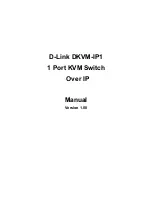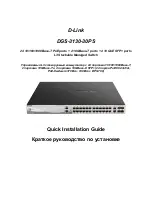
30
.....
Avocent® Matrix High Performance KVM Switching System
Peripherals Tab
In order to understand the Peripherals Tab, you need to first understand what an EDID (Extended
Display Identification Data) is. EDIDs are built in to video monitors so the computer that a monitor is
connected to can query the monitor for its characteristics and capabilities. The computer’s video
hardware can then drive the monitor according to the resolution and timing that the monitor can
accept. This will affect, for instance, the resolution of the operating system’s desktop display.
When a Matrix transmitter is connected to a target computer, the transmitter takes the place of a
real monitor, and it must act like a real monitor and present an EDID to the computer when queried.
A transmitter with factory default settings will present a generic EDID that represents a fictitious
monitor that supports all of the resolutions that can be handled by the Matrix system.
You can override this default EDID, by capturing an EDID from an actual monitor connected to a
receiver, and push that EDID down to the transmitter. Then the computer attached to that
transmitter will act just like it would if that monitor were directly connected to the computer.
There are several reasons why you might want to push a monitor’s EDID down to a transmitter. If
the monitor does not support the highest resolution reported by the factory default EDID, then you
could push the monitor’s EDID to the transmitter in order to prevent the computer’s operating
system from driving the video output at the unsupported resolution. This will avoid requiring the
receiver to scale the video down to the resolution required by the monitor. This may result in a
crisper video image for the user and will allow a KVM session to be established more quickly (since
the receiver does not have to change its video resolution and the monitor does not have to
resynchronize). In a system where all or most of the monitors are the same, you might wish to push
that monitor’s EDID to all the transmitters in order to eliminate the need for any video scaling when
users establish connections to various targets
The Peripherals tab displays the attributes that may be captured from a monitor connected to a
receiver. When a monitor is connected to a receiver, the monitor's EDID information can be pulled
into the switch and stored. The EDID information can then be pushed out to any available
transmitter. If the transmitter and receiver are running the same resolution, establishing a video
connection will be faster because the receiver will not have to change resolution and the monitor will
not have to resynchronize with the resolution change.
The name of the peripherals and the description can be changed by selecting the monitor and
editing the Attributes tab. The manufacturer ID and product code are read only fields.
The Monitors list is pre-populated with two read-only entries: the Avocent Default VGA EDID and
Avocent Default DVI EDID. These are the factory default monitor attributes (EDIDs) that are
Summary of Contents for AVOCENT
Page 1: ...Avocent Matrix High Performance KVM Switching System Installer User Guide ...
Page 6: ...iv Avocent Matrix High Performance KVM Switching System Installer User Guide ...
Page 12: ...Product Overview 6 ...
Page 18: ...Installation and Configuration 12 ...
Page 54: ...48 Avocent Matrix High Performance KVM Switching System Firmware Upgrade on Diagnostics Tab ...
Page 58: ...Appendices 52 ...
















































